
Review on 🔒 Chamberlain Group CWA2000 Chamberlain Driveway Alert: Enhanced Security in Sleek Black Design by Jeremy Carpenter

Good product, worked well for me at 100 yards
I had some concerns after reading some of the reviews but decided to go with this anyway Purchase. . I'm glad I did this, it works fine. For others, here are some of my notes. The reviews talking about Heat and Partial Detection are correct, placement and aiming are really important. I installed them at the end of an east-west access road in an open field, so traffic and sun were factors. I placed two devices, one on opposite sides of the lane, facing the lane at about a 45 degree angle from the road. Each device was attached to a tree approximately 18 inches off the ground. I posted two contrasting units because firstly I had some reliability concerns based on some of the reviews and secondly it really needs to see something hot on cold days so I wanted to capture the exhaust heat no matter where it is on the vehicle The sensor is placed about 12 to 15 feet from the driveway, which is about 12 feet wide. This seems like the perfect place; Movement anywhere in the driveway activates both sensors. ; If you get a small fare, only the nearest sensor will be activated. So far, this has an accuracy of 100%. I haven't had a single confirmed false alarm. of the few non-vehicle alerts we had, some were confirmed as deer or dogs and others just couldn't be confirmed in the dark. There was no problem spotting me walking down the driveway on a hot day, or on a cold day when I was completely wrapped up off my head. I didn't have any problems with the sun, nor with the show traffic interfering with the sensors. The sensors have a green LED that activates and is visible through the PIR lens for about 1 second when they detect movement. This isn't usually a big deal, but on a dark night when approaching the sensors, a green light is emitted, quickly drawing attention to the device. If you're doing a stealth install, keep this in mind. A previous homeowner installed one of these units very close to where I installed my new units. It showed signs of corrosion and based on other reviews I agree that water ingress seems to be an issue. So when I assembled my devices (yes, some basic assembly is required, but it's not rocket science), I used clear silicone to make a good seal around the bezel, including the antenna hole and screw holes. I also installed the supplied sun visor over the blocks. Next time I change the batteries I'll see how they handle the weather and bugs. Too bad I didn't have AA lithium batteries when I picked them up; Instead, I only had alkaline batteries on hand. Hopefully I'll give an update here on how long the batteries have lasted and how well they stay dry. The mounting plate worked well, I pre-assembled everything and just screwed the mounting plates directly to the trees near the driveway with wood screws. The reception is good so far. These 2 apartments are located just 100m from the residence in an open field with no obstacles other than a few small ornamental trees. The signal must then be routed through the concrete cladding and 4 plastered interior walls. The horn is loud enough (at high volume) to be heard throughout the house, even on other floors. Pairing the devices with the receiver was easy enough. I wish these devices were different: the beep when the sensor is triggered is a long, whiny squeak, not a fast chirp, and it's a bit annoying. Not necessarily bad for an alarm, but it's very similar to the beeps of a washing machine and dryer. Each sensor paired with the receiver will emit a corresponding number of beeps. At 8 units, it's an awfully long string of annoying beeps. It would be great if you could adjust the beeps (pitch and beep length). It would be nice if there was an additional output (potential-free relay contact). built into the device so it can be connected to a variety of other systems. Even better would be 8 discrete relay contacts (one for each sensor). Best is to add Z-Wave or some similar smart module so you can really integrate it with other systems. With a simple sequential beep for the sensor zone number (1 beep for zone 1, 2 beeps for zone 2, etc.) you will run into a few problems. For example, if sensors 1 and 2 activate almost simultaneously, you will get 3 beeps. Well, did sensors 1 and 2 work, or did sensor 3? Did sensor 4 trigger or was it sensor 2 twice? you have the idea If sensors had a unique audio signal (e.g. a high pitched tone followed by several low pitched tones for each sensor) it would be easier to distinguish between different sensors. In this case, the "Hi-Low-Hi-Low-Low" between probes 1 and 2 is easily distinguished from the "Hi-Low-Low-Low" of probe #3. The point is that the current system can cause confusion in different zones, and there are many answers to this problem, but the manufacturer must choose one and implement it.
- Includes a base receiver and sensor (possibility of additional CWPIR sensors sold separately)
- Slightly torn
New products
Comments (0)
Top products in 📹 Motion Detectors

Hard-Wired Motion Sensor: Maxxima Ceiling Mount 360° PIR Occupancy Sensor

10 Review
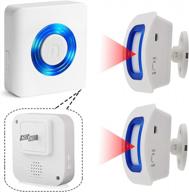
Stay Safe And Secure: Wireless Motion Sensor And Pager Bed Alarm For Elderly And Kids

19 Review

YoLink Smart Outdoor Motion Detector: 1/4 Mile Range LoRa-Powered Wireless Sensor for Driveway Alert, Trespassing Alarm, Remote Monitoring & Alerts - Alexa, IFTTT Compatible. Hub Required!

11 Review
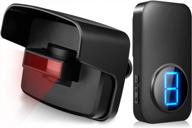
Driveway Alarm Wireless Motion Detector Alarm 600 Feet Long Range Outdoor Weather Resistant Motion Sensor & Detector Security Alert System Monitor Protect Outside/Inside Property

36 Review
Another interesting products
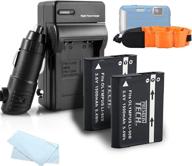
2 Pack Battery And Charger Kit Bundle For Olympus Tough TG-Tracker, TG-5, TG-2IHS, TG-3, TG-4 Waterproof Digital Camera Includes 2 Replacement (1500Mah) LI-90B, LI-92B Batteries + Charger + More

43 Review

Fitbit Versa 3 Smartwatch Replacement Band: TOYOUTHS Elastic Nylon Fabric Strap For Women & Men

50 Review
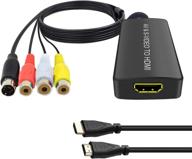
Dingsun SVideo To HDMI Converter: 3RCA AV Support 1080P/720P Compatible With WII U, PS2/PS3, STB, Xbox & More!

43 Review
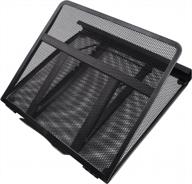
HUANUO Adjustable Laptop Stand Riser For Desk - Fits Up To 15.6 Inch Notebook, Mesh Ventilated Cooling With 8 Tilt Levels For Improved Airflow & Ergonomics

29 Review

